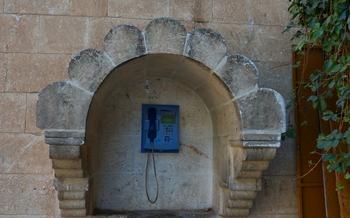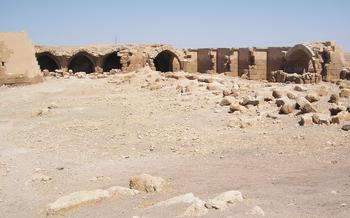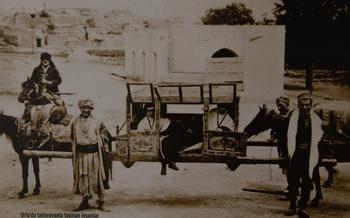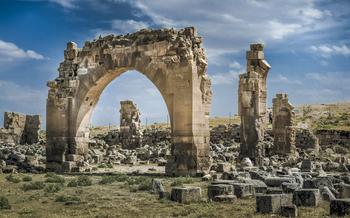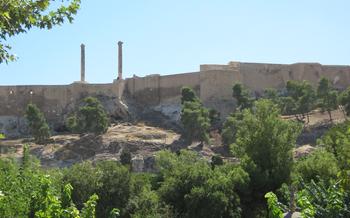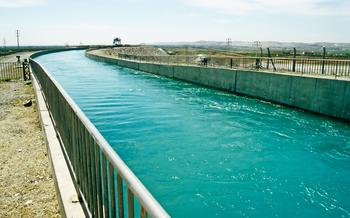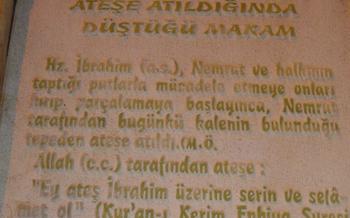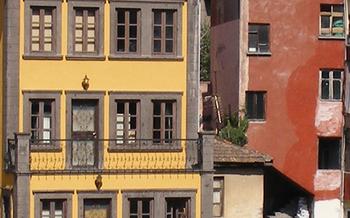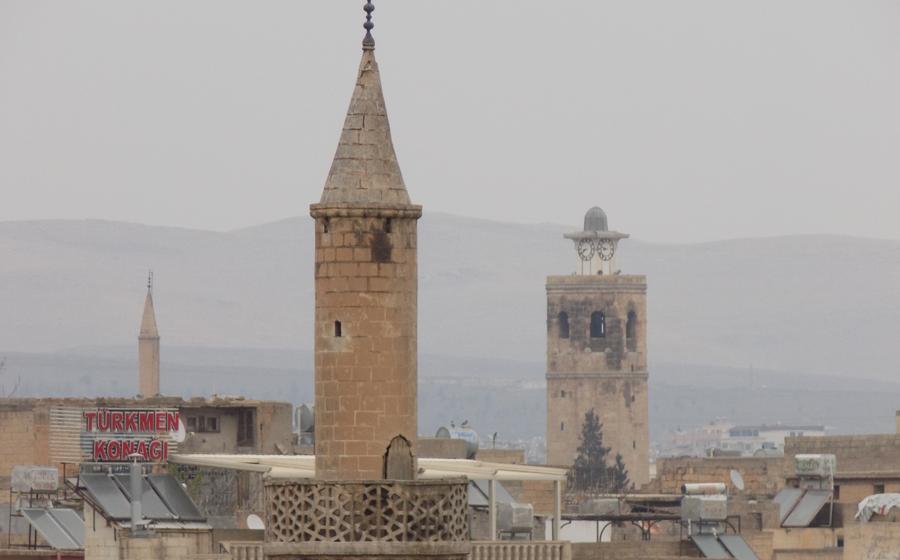
Cave of the Prophets (Peygamberler Mağarası)
- The Cave of Prophets (Peygamberler Mağarası)
- History: A Revered Site of Worship
- Religious Beliefs: A Place of Prayer and Reflection
- Legends and Stories: Tales of Faith and Miracles
- Architectural Features: Unique Chambers and Inscriptions
- Location and Accessibility
- Historical Significance
- Biblical Connections
- Visiting the Cave
- Exploring the Cave's Interior
- Religious Symbolism
- Cultural Significance
- The Story of Prophet Abraham
- Other Prophets Associated with the Cave
- The Legend of the Seven Sleepers
- The Cave's Healing Properties
- Surrounding Attractions
- Practical Tips for Visitors
- Insider Tip: Uncovering the Hidden Chamber
The Cave of Prophets (Peygamberler Mağarası)
Journey into the depths of the Cave of Prophets, a sacred site revered by Muslims and Christians alike. Step back in time as we unveil the rich history, religious beliefs, legends, and architectural features that make this cave a must-visit destination for those seeking spiritual enlightenment and cultural exploration.
History: A Revered Site of Worship
The Cave of Prophets holds a storied history dating back centuries, serving as a place of worship and spiritual significance for various religious groups. According to local beliefs, the cave was first discovered by Prophet Abraham, who visited the site during his journey from Ur to Canaan. Over time, the cave became a revered site for both Muslims and Christians, who believed it to be a place where prophets and saints sought refuge and communion with the divine.
Religious Beliefs: A Place of Prayer and Reflection
For Muslims, the Cave of Prophets holds immense religious significance as it is believed to be the place where Prophet Abraham received divine revelations from God. The cave is also associated with other prophets, including Adam, Noah, and Moses, who are said to have visited the site and left their spiritual imprints. Christians, on the other hand, venerate the cave as the place where the Seven Sleepers, a group of Christian youths, miraculously slept for centuries to escape religious persecution.
Legends and Stories: Tales of Faith and Miracles
The Cave of Prophets is steeped in a rich tapestry of legends and stories that have been passed down through generations. One of the most famous legends is that of the Seven Sleepers, who were said to have sought refuge in the cave to escape persecution by the Roman emperor Decius. The youths miraculously fell into a deep sleep that lasted for centuries, only to awaken during the reign of the Christian emperor Theodosius II.
Architectural Features: Unique Chambers and Inscriptions
The Cave of Prophets boasts unique architectural features that reflect its historical and cultural significance. Visitors can explore its various chambers, each with its own distinctive features. The cave is adorned with inscriptions and carvings that provide clues to its ancient origins and the religious beliefs associated with it. These inscriptions, some of which date back to the Roman and Byzantine periods, offer valuable insights into the cave's rich past.
Location and Accessibility
The Cave of the Prophets is strategically situated within the city of Şanlıurfa, in southeastern Turkey. This picturesque city is renowned for its rich cultural heritage and historical significance. The cave is conveniently located in the heart of the city, making it easily accessible for visitors.
To reach the cave, visitors can opt for various transportation options. Public transportation, such as buses or taxis, is readily available from the city center. The journey takes approximately 15-20 minutes, depending on traffic conditions. Alternatively, visitors can choose to explore the city's vibrant streets on foot, enjoying the local atmosphere and admiring the historical landmarks along the way.
Upon arrival at the cave, visitors are greeted by a serene and tranquil ambiance. The cave's operating hours are generally from 8:00 AM to 5:00 PM, allowing ample time for exploration. Admission fees are nominal, and visitors can purchase tickets at the entrance. It's advisable to check the official website or contact the local tourism office for any updates or changes in operating hours or admission fees.
Historical Significance
The Cave of the Prophets holds immense historical significance, dating back to ancient civilizations. It is believed that the Hittites, Romans, and Byzantines all had a presence in the area, leaving their mark on the cave's history. In the 7th century AD, the cave gained prominence as a sacred site for Muslims when the prophet Muhammad mentioned it in the Quran. This recognition solidified the cave's importance as a place of worship and pilgrimage for Muslims.
Moreover, the cave's significance extends beyond Islam. It is also revered by Christians, who believe that the cave was once the refuge of Abraham's family, including his wife Sarah and their son Isaac. The cave's association with biblical figures and events has made it a site of great religious importance for both Muslims and Christians.
In recognition of its outstanding cultural and historical value, the Cave of the Prophets was designated as a UNESCO World Heritage Site in 201This prestigious recognition further underscores the cave's global significance and its role in preserving and promoting cultural heritage.
Biblical Connections
The Cave of the Prophets holds a special significance in the biblical narrative, interwoven with the stories of several prominent figures. According to tradition, the cave is believed to have been visited by the revered patriarch Abraham during his journey from Ur to Canaan. The cave is said to have served as a refuge for Abraham's family, including his wife Sarah and their son Isaac, during their travels. The association with Abraham adds to the cave's spiritual aura, making it a place of reverence for those who follow the Abrahamic faiths.
Beyond Abraham, the cave is also linked to other biblical patriarchs and prophets. Jacob, the grandson of Abraham, is said to have dreamt of a ladder reaching heaven while sleeping in the cave. The prophet Job, known for his unwavering faith despite his trials, is also believed to have sought solace within the cave's walls. These biblical connections further enhance the cave's religious importance, attracting pilgrims and visitors from around the world who seek spiritual enlightenment and a connection to their faith.
Visiting the Cave
Visitors to the Cave of the Prophets have the option of exploring the site independently or joining a guided tour. Guided tours are highly recommended, as they provide valuable insights into the cave's history, religious significance, and cultural importance. Knowledgeable guides can share fascinating stories and anecdotes, bringing the cave's past to life and enhancing the visitor experience.
For those who prefer to explore at their own pace, self-guided tours are also possible. Suggested routes and points of interest are available to help visitors make the most of their visit. The cave is relatively easy to navigate, and visitors can take their time to admire the inscriptions, artifacts, and natural formations.
The duration of a visit to the Cave of the Prophets can vary depending on individual interests and the level of exploration. On average, visitors can expect to spend around one to two hours exploring the cave's various chambers and features.
Exploring the Cave's Interior
Beyond its religious and historical significance, the Cave of the Prophets also captivates visitors with its fascinating interior. Comprising multiple chambers, each with distinct features, the cave offers a unique and immersive experience.
The largest chamber, known as the Main Hall, serves as the focal point of the cave. Here, visitors can admire the impressive vaulted ceiling, adorned with intricate carvings and inscriptions that narrate stories from the past. The walls of the chamber are lined with niches, once used to hold oil lamps that illuminated the cave's interior.
Venturing deeper into the cave, visitors will encounter smaller chambers, each with its own unique features. Some chambers are adorned with colorful frescoes depicting scenes from religious texts, while others house ancient artifacts and relics that provide a glimpse into the cave's rich history.
Throughout the cave, visitors can marvel at the stunning natural formations created by the erosion of limestone over millennia. Stalactites and stalagmites in various shapes and sizes adorn the cave's walls and ceilings, creating a captivating and otherworldly atmosphere.
Exploring the cave's interior is an awe-inspiring experience that allows visitors to connect with its spiritual and historical significance while appreciating its natural beauty.
Religious Symbolism
The Cave of the Prophets holds profound religious significance and is revered as a symbol of faith and spirituality for various religious groups. For Muslims, it is believed to be the site where Prophet Abraham received divine revelations, including the command to sacrifice his son. The cave is considered a testament to Prophet Abraham's unwavering faith and obedience to God, making it a sacred place for Muslims who visit it for pilgrimage and reflection.
For Christians, the cave is associated with the legend of the Seven Sleepers, a group of Christian youths who are said to have slept in the cave for centuries. The legend embodies the themes of persecution and unwavering faith, making the cave a symbol of resilience and religious devotion for many Christians.
Visitors to the cave are encouraged to show respect for its religious significance and its role as a place of worship. It is important to maintain silence and avoid any actions that may be disruptive or disrespectful to those engaged in prayer or contemplation.
Cultural Significance
The Cave of the Prophets holds immense cultural significance for the local population of Şanlıurfa. It is deeply embedded in their traditions and beliefs, serving as a source of inspiration and a symbol of their cultural heritage. The cave's religious associations have influenced local storytelling and folklore, giving rise to numerous legends and tales that have been passed down through generations. These stories often revolve around the cave's sacred nature and its connection to the prophets. The cave stands as a testament to the rich cultural tapestry of the region, bringing together people from diverse backgrounds to share a common heritage and sense of belonging.
The Story of Prophet Abraham
The Cave of the Prophets holds immense significance in the story of Prophet Abraham, a revered figure in Islam, Christianity, and Judaism. According to religious tradition, Prophet Abraham, known for his unwavering faith and obedience to God, migrated from Ur to Canaan, passing through the region where the cave is located. It is believed that during his journey, Prophet Abraham received divine revelations in the cave, including the command to sacrifice his beloved son, Isaac. This pivotal event, known as the Akedah or the Binding of Isaac, serves as a testament to Prophet Abraham's unwavering faith and willingness to submit to God's will. The cave, therefore, symbolizes Prophet Abraham's unwavering devotion and obedience, making it a sacred and revered site for followers of these faiths.
Other Prophets Associated with the Cave
Prophet Adam: Beyond Prophet Abraham's connection to the Cave of Prophets, there are several other significant figures associated with the site. One of them is Prophet Adam, the first man according to Abrahamic religions. According to local tradition, Prophet Adam is believed to have visited the cave and left his mark on one of its walls. This mark, often referred to as "Hazreti Adem'in Izi" (Footprint of Prophet Adam), is a revered spot within the cave, attracting pilgrims and visitors who seek to connect with this ancient prophet.
Prophet Noah: Another prophet linked to the Cave of Prophets is Prophet Noah, who is known for his role in the Great Flood. According to Islamic tradition, Prophet Noah and his followers took refuge in the cave during the flood, seeking protection and guidance from God. The cave is believed to have served as a shelter for them, providing solace and safety during this tumultuous time.
Prophet Moses: The Cave of Prophets is also associated with Prophet Moses, a pivotal figure in both Judaism and Islam. While there is no direct mention of Prophet Moses visiting the cave in the Quran or the Bible, some local legends suggest that he may have passed by the site during his travels. The cave's proximity to Mount Sinai, where Prophet Moses is believed to have received the Ten Commandments, further strengthens this connection.
The Legend of the Seven Sleepers
The Cave of the Prophets is closely associated with the Christian legend of the Seven Sleepers, a tale that has captivated the imagination of believers for centuries. According to tradition, during the reign of the Roman Emperor Decius, a group of seven Christian youths sought refuge in the cave to escape persecution for their faith. They fell into a deep slumber that lasted for over 300 years, during which time the world underwent significant changes.
Upon awakening, the sleepers emerged from the cave to find a transformed world where Christianity had become the dominant religion. Their story serves as a testament to the power of faith and the enduring nature of divine protection. The legend of the Seven Sleepers has had a profound impact on Christian culture, inspiring works of art, literature, and music. Visitors to the Cave of the Prophets can immerse themselves in this captivating tale and contemplate the enduring legacy of these faithful young men.
The Cave's Healing Properties
Local belief endows the Cave of the Prophets with extraordinary healing properties, particularly for ailments related to fertility and childbearing.
Surrounding Attractions
In the vicinity of the Cave of the Prophets, visitors can explore several other captivating sites that offer a glimpse into the city's rich history and culture.
-
Balıklıgöl (Fish Lake): Just a short walk from the cave, the Balıklıgöl, also known as the Pool of Fish, holds a special place in the hearts of believers. This sacred pool is associated with the legend of the Seven Sleepers, who are believed to have sought refuge in a cave near the lake during a period of persecution. Visitors can marvel at the large carp that swim in the pool, considered sacred due to their connection to the legend.
-
Şanlıurfa Castle: Perched atop a hill overlooking the city, Şanlıurfa Castle stands as a testament to the city's enduring heritage. Built in the 12th century, the castle has witnessed numerous historical events and served as a stronghold for various civilizations. Visitors can explore its imposing walls, towers, and courtyards, offering breathtaking panoramic views of the cityscape.
-
Other Historical Sites: Şanlıurfa is home to an array of other historical sites that are easily accessible from the Cave of the Prophets. The Harran Ruins, located approximately 45 kilometers from the city, offer a glimpse into the ancient city of Harran, once a significant center of trade and culture. Additionally, the Göbeklitepe archaeological site, situated about 15 kilometers northeast of Şanlıurfa, is renowned for its impressive collection of megalithic structures, believed to be among the oldest in the world.
Practical Tips for Visitors
When visiting the Cave of the Prophets, it's essential to be mindful of local customs and the cave's religious significance. Dressing respectfully, with shoulders and knees covered, is recommended to show respect for the spiritual nature of the site. Photography is generally allowed within the cave, but visitors should be respectful of other visitors and avoid using flash photography. As there are no food outlets within the cave, it's advisable to bring your snacks and drinks or plan to dine at one of the nearby restaurants after your visit.
Insider Tip: Uncovering the Hidden Chamber
Amidst the vast chambers and intricate passages of the Cave of Prophets, there lies a hidden gem waiting to be discovered. Tucked away from the main path, a narrow passage leads to a secret chamber that holds an air of mystery and fascination. While exploring the cave, be sure to ask your guide or keep an eye out for this hidden treasure. Venturing into this secluded space is like stepping back in time, offering a unique and intimate glimpse into the cave's ancient history and spiritual significance. The hidden chamber is a testament to the rich tapestry of stories and legends that surround this revered site, making it a must-see for anyone seeking an extraordinary and unforgettable experience.

